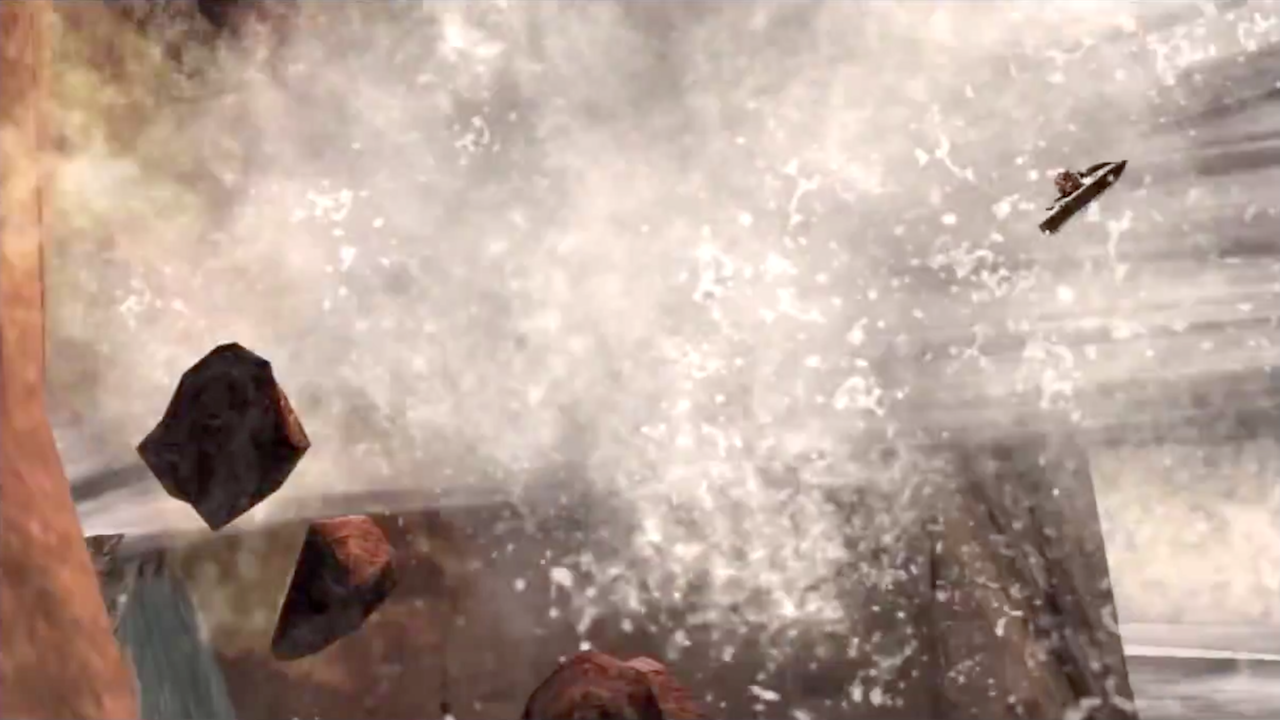Action Game ≠ Action Film

Resident evil 4 (2005) is amazing. 96 on Metacritic, so everyone loves it.
But dear me, what a terrible ending.
Whoosh.
Let me set the scene
The super-villain cult-leader, a defected agent who used to be your partner, touches the scar on his face and announces in a deep, sinister voice, swishing his long, black cape,
“I will help you awaken from your world of clichés!”
An east-asian action-woman in a slit, dragon-embroidered evening dress and stiletto heels dives suicidally off the roof of a building only for a helicopter to rise up, carrying her in the back. Flashing her meticulous nails, she activates an electronic countdown timer that will detonate the whole island and everything on it — including you, as the American beefcake hero, and the president’s daughter who fell in love with you when you saved her life. The helicopter lady throws a novelty keyring down onto the rooftop: the keys to her jet-ski.
Capcom did an incredible job of hiding all traces of ironic awareness in this scene.
Cool!
If this were an action movie then sure, throw in a jet-ski. It’s novel, it’s exciting — it’s a high-octane move. It probably has even more octane in it than shooting a massive scorpion-octopus-spider in it’s only eye with a "Special Rocket”. And the octane levels in that scene were pretty wild, as you would imagine. Exciting, the whole world agrees: “96 — Universal acclaim”.
Now, a film can just show you a jet-ski race at any time — even if the film hasn’t been anything to do with jet-ski races until that point. It’s not my field, but I’m sure a great many classic works of cinematic art have done exactly that. Equally, a game can show us a jet-ski race whenever it wants, too. But it can’t make us play a jet-ski race whenever it wants.
In addition to film-like audio-visual experiences, videogames provide some sort of interactive structure. If a game’s interactive structure is carefully developed to be about moving in a stilted way, selecting weapons lethargically from an implausibly large ammo box, and splattering assorted mutations sprouting from the necks of rustic villagers — if it has been carefully and artistically developed to explore those themes — then it can’t suddenly pivot in the final scene to jet-ski racing without defusing its atmosphere.
So how do you cram an exciting variety of playable action scenes into a game with only a single focus in terms of playable mechanics? QTEs! Brilliant. As I decided last week, QTEs are a risky approach to interactivity to say the least. They will destroy engagement with a game’s story unless they are connected to thoroughgoing mechanics that teach us the meanings of individual button presses.
But 96 though
A game can readily pivot the content of its metaphor, just like a film, but its system can’t switch as rapidly, so suddenly varied plot events can’t offer the full interactive depth that games can achieve. Jumping from sniper rifle to “Special Rocket” to controlling a crane to racing a jet-ski is not going to work when the interaction mechanics are so focused on something else. I would much rather finish a game engaging with the sophisticated core of it’s interaction model than slamming left and right repeatedly until I learn the pattern and get to watch a cut-scene.
Of course this doesn’t really apply to Resident Evil 4. Everyone loves Resident Evil 4.
And now, to prove myself wrong
Just quickly, in conclusion, to prove that videogames will always solve the problems I find for them, I suppose I should mention a game whose subject matter constantly fluctuates, whose mechanics change and are retaught to the player every few seconds, and which could easily throw in a jet-ski, a rocket, and a scorpion-octopus without anyone even noticing.
Sleep! Sniff! Potato! What? Octopus! Wait— Jet-ski! Whatever! It’s WarioWare, Inc. (2003), that postmodern gamer’s-game of meta-gaming about games — now on my list for a later post.
🎮💡
Photographer and writer covering Tokyo arcade life – the videogames, the metropolis and the people




